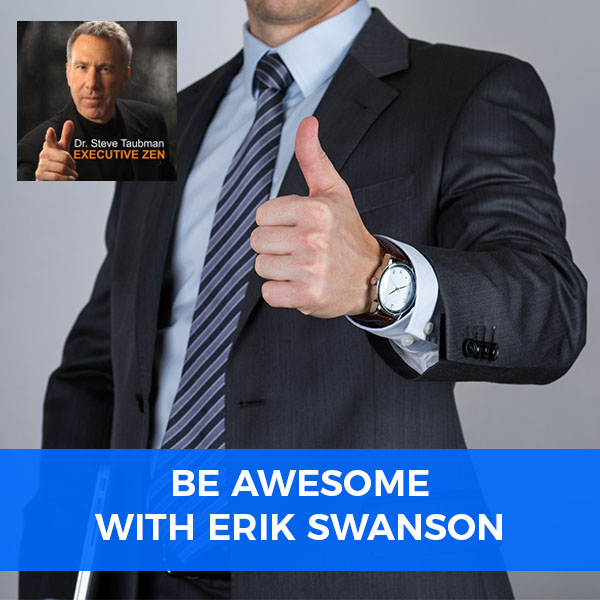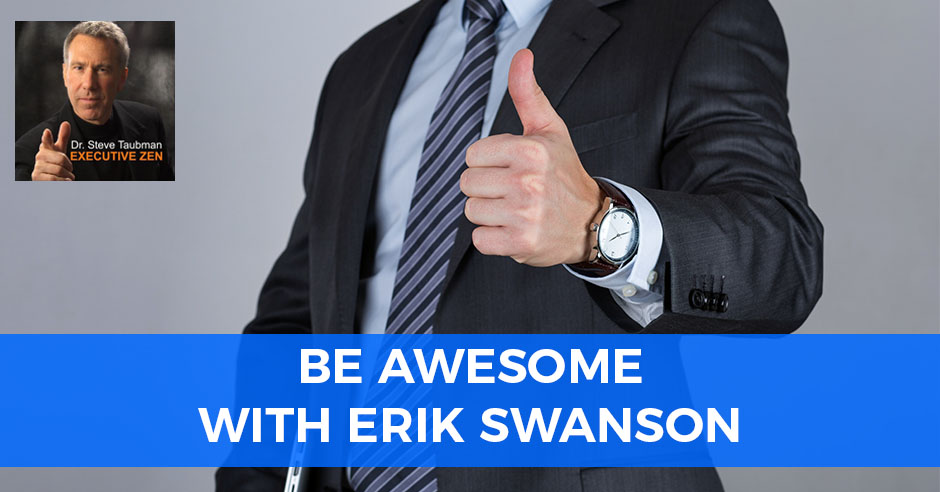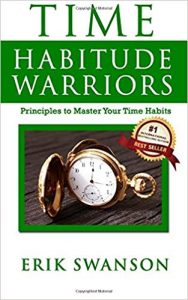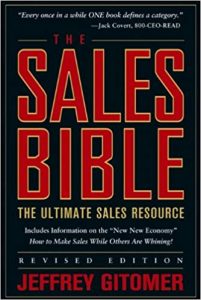

In this episode, I’m joined by my friend Erik Swanson. Erik has been speaking and training sales teams and entrepreneurs for a couple decades. Having shared the stage with such legends as Les Brown, Jack Canfield, Brian Tracy, and Tony Robbins, Erik is regarded as an important voice in the personal and professional development worlds.
Erik is the founder and president of Universal Seminars and the Habitude Warrior Conference, influential programs that attract thousands of leaders and aspiring leaders every year.
In our conversation, Erik provides key ideas that you can implement immediately to improve your business and cultivate greater loyalty from your customers and your team. Expect to come away from this conversation with energy, drive, enthusiasm, and ideas! 🙂
—
Listen to the podcast here:
Be Awesome with Erik Swanson
We are on the fourteenth episode into this show. I absolutely encourage you to head over to iTunes and leave a review and a rating of the show. We’re looking for lots of people to share their enthusiasm for this program, which has been a remarkable journey. Thank you to all of you. I’m excited about our topic, which is all about attitude. Our guest is Mr. Awesome himself, Erik Swanson, the undisputed champion of attitudes. I’ve been thinking a lot about this idea of attitude and how my attitude has had an impact on not just the effect of what I’ve been able to accomplish, but also on how I feel on the inside.

Be Awesome: Your attitude has had an impact on what you have accomplished in your life.
I’ll tell you a couple of stories that reflect how this has been playing out to me. I had a situation where I created a business arrangement where I paid a fair amount of money to be part of a gathering, part of an event. I didn’t get what I expected to get out of the event. I was told upfront that there was the possibility of a refund on this thing. When I went to get that refund, there were all sorts of obstacles put up in my way and it wasn’t handled with a lot of integrity. It put me into resistance mode. It made me feel like I needed to be in a reaction. I needed to be defensive. I needed to think of how to get what was mine. All of us in business and in our personal lives, particularly for the leaders, we’re thinkers. We’re the kinds of people who like to look at a situation and try to find our way through it and get satisfaction. I’m not demeaning that approach at all. It’s important that we have that. In the immediate wake of that experience, I ran into a couple of other challenges with the airlines. The big surprise there, I was going through a series of frustrating experiences with my airline of choice that culminated in a mind-boggling admission on the part of the airlines that they do not care what their customers think.
I got it on videotape with this person saying that this particular airline has no human kindness. My jaw dropped and I was blown away by that. I found myself in the mode of being a freedom fighter. They saw you trying to fix the problem, trying to right the wrong, trying to be the guy who won’t go down without a fight. I always think of that as a relatively positive trait. What I recognized in the midst of this was that as I continued to fight the good fight, it stopped being a good fight. It stopped being something that empowered me and it started being something that pulled me down because I started looking for fights everywhere. I started becoming somebody who is a disgruntled consumer. Lo and behold, wherever I turned, I found something to be pissed off of that.
It started to take its toll on me in ways that I’ve probably experienced numerous times before. Luckily, with the work I’ve done on myself, my mindfulness training and ability to get a little bit backstage to my own inner process, I was able to look at myself in the midst of all this. I said, “This isn’t serving you. You may win the battle but you’re going to lose the war.” I was talking to Kathrin O’Sullivan, a wonderful guest who speaks about navigating complexity and about using mindfulness toward that end. In the context of our conversation, she was talking about monitoring your energy, whether you’re coming from a place of creative energy or reactive energy. In retrospect, what was happening for me was that I was stuck in reactive energy.
I had left the area of creative energy and so I ceased to be the master of my own attitude. I ceased to be the master of my own sense of well-being. Everything came down to whether or not I was going to prove myself right and prove others wrong. We’ve all been there. We all do that. Sometimes we’ve got to do it. There’s an art form to that so we don’t become attached to it, where we recognize that we are ultimately the source of our own well-being. Whether or not we win the fight and whether or not we can prove ourselves right in every situation, being aware that we may have gone off the deep end, we may have stopped monitoring our own inner state. Then we may be creating more of the same, becoming people who attract negativity to ourselves. I call it being a source of your own sense of well-being.
We have more choice than we realize. Click To TweetWe have more choice than we realize. In those times when one or two things that have cropped up and you find yourself going into a negative place, into a combative, defensive, reactive place, that’s maybe the time to step back. If you’re a leader, if you’re a person with a lot of things on your plate, it behooves you to rise to the next level of consciousness. You’re not just in the fight, you’re also witnessing it. You’re watching yourself and deciding whether or not what you’re doing is empowering or disempowering you. What is it bringing to the world? What is it creating in the world? That’s one piece of this attitude puzzle that I wanted to use as a jumping off point.
As most of you know, I’ve got a travel companion. My dog, Woody, he goes with me everywhere and we were traveling out to San Diego to speak at a conference. On the way there, we had one of these flights from hell. It worked as a three-legged journey. The first one was Burlington to Philly and that part of the journey went off pretty well without a hitch. When we got to Philly, our next stop was Dallas. We sat in Philly waiting for the plane to leave, but it was delayed because what they said was, “We’re sorry folks, we can’t take off because we can’t find the pilot.” Eventually, they found the pilot and we got out on the tarmac. That leg wasn’t too bad. We finally got to Dallas. In Dallas, they took us off the plane and when the time came to get on the connecting flight, that flight was delayed an hour. They put us on the plane, brought us out on the tarmac and then held us out there for an hour. Then they brought us back and held us there for an hour. Then they brought us back out on the tarmac and back and forth, back and forth.
Eventually, they canceled the flight. People were now going ballistic and I had to deal with the Woody issue, which was how do I get Woody outside before he explodes? In the midst of this hubbub, I guess I didn’t do it fast enough because Woody ended up letting loose on the airport floor. I felt terrible because he’s not the kind of dog who would do something like that. He was just beyond his capacity and so he peed all over the floor. I was mortified. I felt bad for him and I felt bad for it happening. I was trying to decide whether or not I should clean it up or put up a crime scene tape or what the protocol was. Along comes this very angry looking official woman in her uniform. She started yelling at me, “Is that your dog?” I said, “Yes,” I’m holding him by a leash so obviously he was. She said, “He just peed all over the floor,” like a newsflash. I said, “I see that.” Then, “He can’t do that.” I said, “He just did and I don’t think he could have helped it. He’s been on this plane now for hours, back and forth and my apologies,” but that didn’t mollify her at all.
Along comes a janitor. He cleaned it up, no problem, everything was taken care of. Look at the difference in attitude. The janitor did his job and he smiled. It was no big deal, but for her, it was the end of the world. For me, it was a slight hassle, but because my flight was canceled and I was going to speak the next morning in San Diego and I had no way to get to San Diego except to wait at the airport until the very early morning flights, Woody and I ended up spending the night not in a five-star hotel room at the Manchester Grand Hyatt, but on the floor of Terminal C of the Dallas Fort Worth Airport. The point of it is that in the midst of all of that, I realized something profound. What I realized was that I was happy. Even though all these things that happened, all of these crises that unfolded, all these challenges that came along, I was happy because I wasn’t using my external to determine my internal state. That’s an important point that we’re going to be delving into here is, who is responsible for your state of consciousness?
I’m thrilled to introduce my guest. As a leading professional speaker, Erik Swanson has been making a huge name for himself in assisting people throughout the United States, Canada and Europe, overachieve specific goals in their business as well as in their personal life. Erik is in great demand speaking to an average of more than 50,000 people a year in various industries and careers. He is personal in his approach. He’s effective at facilitating a wide array of training topics. The companies and associations always look to having him back because he speaks with such authenticity and authority. His messages are solid and he brings together tremendous and remarkable people. The people always love listening to him and myself included as he shares real-life experiences, which is also my way of communicating.
Erik shares the stage with some of the most talented famous speakers in the world like Brian Tracy, Jack Canfield, Les Brown, Tony Robbins and the late great, Jim Rohn. These real-life experiences have molded Erik into the amazing connector and speaker he is today. He’s an active member of the speaking community, President and CEO of Universal Seminars and Habitude Warrior International, which provides training for corporations and individuals throughout the world. His work with authors and speakers of The Secret and The Millionaire Mentor has developed his key message conveyed through his new book series called Habitude Warriors, The Art of Maintaining Great Habits and Great Attitudes.
—

Time Habitude Warriors: Principles to Master Your Time Habits
I’ve known Erik for many years back in my days as a chiropractor. I’ve worked with his dad who was a wonderful man. Unfortunately, he passed away not too long ago. We all miss him. John Swanson was a great attorney. I did some personal injury work in my chiropractic practice, but I knew his dad for a long time. Erik and I connected as a young man. He was interested in magic and I was a performing magician myself. Years later, we become reacquainted, finding that we both landed in the personal development space. In Erik’s case, in a very incredible way and with incredible credentials. I’m very honored to welcome Erik Swanson. Welcome, Erik.
Thank you so much, Steve. That was an awesome intro.
Did you hear my attitudes stories? Did I make any sense there?
It’s amazing how people are so reactive rather than creative with their energy.
Thank you. I’ve got to ask you about Mr. Awesome thing, where did that come from?
I was coming off the stage in San Diego at another event with a buddy of mine. There was an applause and everyone loved it and everything. It was a crowd of about 500 or so. All of a sudden, this gentleman comes up to me and I recognized him right away. He looked at me and he said, “You’re Mr. Awesome.” I’m like, “Thank you.” When Les Brown calls you Mr. Awesome right to your face, you coin the heck out of that. That was Les Brown who nicknamed me Mr. Awesome.
If Les Brown said it, it’s got to be true. Mr. Awesome, it certainly fits. I’ve seen you speak, I’ve seen your work on stage. We had an opportunity to spend a little time together at The Secret not too long ago and you crushed it up there.
Thanks, I appreciate it. Hold up the audience.
You’re in front of a lot of them.
It seems that way.
I’d like to learn more about your model because from what I understand, you’re putting on seminars constantly all over the country. You’ve got a following of a raving fan base of people who attend your seminars. That’s not just the individuals but also people in business and people in leadership positions in business. Tell us a little bit about that whole thing.
What I did was over the years, I started with Brian Tracy twenty years ago. When I first started with him, it was all about getting out there and selling and teaching people how to close, how to sell and all that stuff. I did a great job for a lot of years with Brian, but then I realized maybe it’s not all about selling, maybe it’s about building relationships. I needed determination back then. I was sitting down with a gentleman named Jim Rohn and he asked me, “What are you doing, Erik?” I said, “I’m working with Brian.” He says, “No, what do you want to do?” “I’m doing sales.” He’s like, “Come on, what do you want to do?”
He basically got it out of me and molded the conversation where I was creative enough to realize that it was about helping others and building relationships. Right then, I decided I’m going to start this habit and attitude thought pattern I had back then. That’s where the genesis of Habitude Warrior came around. It’s all about your habits and attitudes. To answer your question, what I decided to do was to go ahead and take a step back and build relationships and then see how that works instead of going in and just being a hard closer. Ever since then, fifteen years later, I worked with Brian for about five years or six years and about fourteen or fifteen years since I’ve designed this whole habits and attitudes thought pattern.
It seems to be that people put it in my universe for a reason. We grew up in this tribe and we have this following. What’s cool about this following is there are three different following types of people for the Habitude Warrior conferences that we have. The first one is the members and they want to grow no matter what industry they’re in. The second type is the people who wanted to share with us and help us with the back of the house. We call them the dream team. They are great followers and we help them, they help us and it’s a win-win for everybody. The third type is the speakers. A lot of people don’t realize and knows about me, but I’ll give you a little secret as long as you don’t publicize this anywhere.
Between you and me, nobody in the world is going hear this.
You know how you lock down a big speaker, let’s say, Les Brown, I’ve had on my stage, or Brian Tracy or Dr. Denis Waitley or Sharon Lechter, all these great speakers. When you locked on a speaker down and booked them for your events, typically 99% of the time, you’re going to go ahead and fill out a contract. You’re going to send it over to their team and their team is going to review it. They will send them back and so forth and so on. It will take a little red tape to get through and all speaker fees and all that stuff. We do all of that, except what we do is we don’t do it through contracts anymore. We simply do it through my relationship and my cell phone with my text messaging and that’s it. I literally text a speaker, whoever that is, and if they’re willing to go ahead and be a relationship builder and be a good friend of mine then I welcome them on my stage. That’s how I built a pretty much two-year waiting list to get on the Habitude Warrior conferences now.
You were talking about some heavy hitters, people that are nationally and internationally known who were on your stage.

The Sales Bible: The Ultimate Sales Resource, Revised Edition
What I did is cool because I was this unknown speaker. I wasn’t even a speaker at that point. I was a trainer working with Brian Tracy. I remember Jeffrey Gitomer called me up. I’m not sure if few of your audience know Jeffrey Gitomer. He’s written the Sales Bible and all the different books on the communication sales. He called me up one day and said, “Erik, I want to mold you into being a mini Jeffrey.” That’s what he called it. I said, “I appreciate it. You’re an awesome dude. I love you, but I can’t be a mini Jeffrey. I can’t even be a mini Brian or mini Tony or mini Les. I need to be a major Erik.”
That’s the thing is I knew how to bring my own talent and carve my own creativity like having that creative energy. That’s what I did. What was cool about it is we had some major players, major speakers on our stages. We do but we also have those speakers who were coming up in the speaker world. You’ll never know, the audience members come to our events, three-day conference and they are so enthralled. They’re so excited because they’re learning from amazing speakers. No matter if they’ve been in business for 30 years or three years. It’s a great platform to learn, grow and share. I’m excited about it as you could probably tell.
We talked about the programs and about your speaking career. Let’s get into your message. Let’s talk a little bit about that because the people who are reading this blog are by and large people who are either in leadership positions or are aspiring leaders. What we’re trying to do is to help people to lead consciously and profit responsibly. That’s the mission of this show. I talk a lot about mindfulness that learning how to be more self-aware to be a more critical thinker and has that greater emotional intelligence. You’re talking about attitude and you’re talking about taking charge of your emotional state. I’d like to give our audience a glimpse of your message. What is it that you’d like leaders to know? What is it that you’d like to transfer to people? If you could wave the magic wand, what would that look like?
My first initial thing is this is all about mentorship. I believe leaders are mentors and that all of us have that ability first of all. Secondly, we have the responsibility and thirdly is the fact that we’re all mentors no matter if you realize it or not. We go out there in the world and we’re mentoring other people on how to drive or how to keep that great attitude or bad attitude, like the experience you had with Woody at the airport and so forth. We’re leaders in our own way. The realization of the fact that you are a leader and a mentor is the first step. I feel that that’s something extremely important in what I call awareness or Habitude Warrior awareness.
You have to realize, whether you got that title or not, that you are always a leader. Click To TweetStep one is realizing that whether you’ve got the title or not, you are always a leader. There’s always some way in which you’re leading or mentoring or impacting others.
Then step two would be to seek out opportunities, and this is what I write in some of my books here. It’s to seek out opportunities to help others sign in what they’re doing. Zig Ziglar told us this years and years ago, if you want to achieve your specific goals, what you want to do is set a goal to help other people achieve their goals and then your goal starts to come into fruition.
I’m going to ask you to drill down on that point a little bit more to seek out opportunities to help others shine. I’m the CEO of International Tyres. How can I use that piece of advice?
I can’t give you specifics about what you’re going to do in that case, but what I do is I seek out opportunities to help other people. In that case, let’s say the CEO of a big corporation. It’s coming down to the employees’ level and leveling them up. That’s the thing. There’s a great book which says, “Don’t fire them but fire them up.” Go there and help them up. Get them excited about what they’re doing. Get in the trenches with them. That’s something that I learned years ago with Brian Tracy in management or leadership 101. The statement is not, “You go do this,” the statement is, “Let’s do this together.” Let me show you how I do this and get in the trenches. That’s what I would do. I would recommend that if you’re a leader, if you’re a CEO, have a CEO meeting with the actual employees rather than all the rest of the CEO or rather than the higher hierarchy.
This is the anti-ivory-tower approach. Get down there. Don’t be afraid to be out there. Which was always interesting to me is when push comes to shove, the most successful people I know are the most accessible. They’ve got such a gift to give. There’s a trending piece of video footage on YouTube of Paul McCartney and the late night talk show host, an English guy, and they’re doing karaoke in the car. Then they decided to go into a pub and Paul McCartney was playing music in the pub impromptu. He’s not going to do it every day. The idea that if you’re in a position of authority, power, recognition, and you are not so full of yourself that you’re willing to be down there with people you can create experiences that will last a lifetime.
You’ve got to remind yourself not to be untouchable. You want to be touchable out there. The more touchable you are, the more touches you’re going to have. What those touches are like sales training techniques. It’s the more connections you have with people.

Be Awesome: The more touchable you are, the more touches you’re going to have.
You got me on two good points here. Number one, realize that you’re a leader. Number two, seek out opportunities and help others shine. Do you have any more of them?
Do things that are unexpected that are going to help other people. It’s all about helping other people. What I do is I’ve got something called “Thank you cards in advance.” What was neat about that, let’s say you had to lock down more business with other companies out there, then send thank you cards in advance. What that means is you send a card and it sounds a little bit like this, “Steve, I just want to say to you that I hear you’re kicking butt out there and changing people’s lives. My name’s Erik Swanson. We haven’t met yet, but I want to thank you in advance for what you’re doing. Here’s a gift card for Starbucks. Coffee’s on me. Let’s get together sometimes.” You send that out to somebody that you don’t even know.
I do this all the time. I get a gift card for coffee places. I don’t even drink coffee but I’ll give you a gift card for $50. I get about ten of these per month. It only costs me about $500 a month. I send them out to ten different clients or potential clients out there that you don’t even know yet. What happens is all you have to do is get an appointment or let’s say a connection with one of these individuals to make a difference in what are you doing out there. I do that each month for twelve months out of the year.
It’s a genius idea, thank you card in advance.
Also there’s something called a Reverse Testimonial. Instead of getting a testimonial for yourself, which we all have to get video testimonials all the time and build up your YouTube channel. If you don’t have a YouTube channel, then you’ve been living under a rock. You’ve got to get a YouTube channel and build that up. My YouTube channel has about 20,000 hits. People go there to watch you, to get vetted, and see if you’re credible. Instead of getting a testimonial video for yourself, which you all should be doing that, here’s what you do. The reverse testimonial is this, you grab your smartphone, grab your assistant or a big selfie stick, one of the two, and take a video of yourself.
It sounds a little bit like this. It will be about 30 seconds of video. I’ll use an example of Gary down the streets was a cool chiropractor. You hit record and you introduce yourself. I would say something like, “My name’s Erik Swanson. I’m a five-time number one bestselling author. Enough about me. Let’s talk about Gary. I want to tell you that Gary Smith, this chiropractor over here, just say the town or city, this guy’s doing some amazing work. I got to tell you there are three things that stand out in my mind about Gary. The first thing is he’s very tenacious. The second thing is he’s personable and the third is he’s always about giving back. My hat’s off to Gary. If you’re ever in this area, you want to connect with somebody that’s going to help you and your family. Check him out. My vote is for Gary Smith. Thanks a lot. My name’s Erik Swanson again.” Thirty seconds, you’re done with that little video.
What happens is don’t send that directly to Gary and his team. You upload it to your YouTube channel but be careful, make sure you’re on Wi-Fi with a good connection because you don’t want to upload it where the connection is poor so that the video looks poor. Make sure you connect with good Wi-Fi and put it onto your YouTube channel. You can put a playlist on your YouTube channel. My playlist sounds, one of them is titled, The People I Go To or The People I Respond and Recommend, something like that. What you’re going to do is you’re going to send and share that video link to Gary and his team. You’re going to send it over and say, “Gary, I want to send you a quick gift. I was excited about setting this up for you. Here you go.” You send it over.
If you want to achieve your specific goals, then set a goal to help other people achieve their goals. Click To TweetGary is going to get this video. It’s a 30 to 45-second video of you giving them an awesome testimonial about him. It’s very unexpected. He doesn’t even know you’re giving it until you surprised them. What’s going to happen is he’s going to get this video and he’s going to be like, “This is awesome.” What he’s going to be liable to do is he’s going to go ahead and share that with his team right there. He’s going to say, “Let’s spread this out. Put it on your YouTube, put it on your Facebook and LinkedIn and all that stuff.” Technically, he’s going to spread it around. What is he technically sharing? He’s sharing your YouTube channel. It’s the reverse testimonial that I made up, probably eight or nine years ago, and it works like a charm.
You’re using that for people who provided services for you. If I’m speaking at an event, I’ll always get testimonials from the people who saw me speak, but do you also do a reverse testimonial for the person who hired you to speak at that event or things like that?
You can do that as well. I’m talking about any type of industry. You don’t have to be a speaker to be able to use the reverse testimonial. The reverse testimonial is a surprise testimonial that you can send to someone that you’d like to highlight.
The wonderful thing about that is it ultimately certainly serves you, but whether it serves you or not, it’s doing unexpected. It’s exceptionally caring and it puts a lot of good energy into the world.
It does both those things and it’s fun too. In the back end, you get more exposure no matter what because you’re out there and people are recognizing you and your brand, your face, your name, everything, all these things go together.
This is all in service to what you said at the very beginning, which is you’ve got this epiphany somewhere along the line while you’re doing the sell training, that it’s about relationships. It’s about giving, it’s about connecting. You made a study of how to make connections. The way I look at it is a lot of people are walking through life in their days. The ideas of a lot of people aren’t expecting anybody to shake them out of their days. By being somebody who’s committed to finding ways of reaching out and connecting, you’re automatically helping people to wake up.

Be Awesome: By being somebody who’s committed to finding ways of reaching out and connecting, you’re automatically helping people to wake up.
I got this other Habitude Warrior techniques that I do. What I do is I high-five five strangers by noon. It happens for two reasons why I take it by noon. First, you’ve got to get out there and make a difference to the world. Second, I met so many people who want to make a million dollar, yet they’re still asleep until 1:00 PM. You’ve got to get out there and meet people, connect to them. Five strangers by noon, high-five them, whatever that high-five could be and it could be something different. I had one lady say, “I’m not a high-five person, I don’t like to do that.” I said, “Pick something nice that you’d like to do.” Maybe a nice gesture. It could be a nice hug or it could be a nice smile. You could buy five cups of coffee for the next five people in line. I was never in the military ever, first responders and all these things. It’s amazing what they do.
What I do is anytime, anywhere, it doesn’t matter where I’m at, I don’t care if I’m at a Burger Joint or a steak place or a coffee place, every single time I see somebody come in and they’re in uniform and I know they’re either a first responder or a military personnel, what I’ll do is get up and go secretly to pay for their meal or their coffee or whatever they had. It’s giving back. Usually, it’s only $10 or $15, you’re not going to miss it. One time in Boston, it was a police officer convention or something. Everyone just kept on coming in. One of the guys on the motorcycle wired it. They called every one of their buddies, they were like, “Somebody’s paying.” There were literally twenty cops that showed up and then all the undercover cops were showing up and showing their badges. It cost me $500 later but it worked to help people.
What I love about this is that so many people have that zero-sum attitude about life. It’s like if I give something that I’ve got less than I had before, but the reality is if you give, you have more than you had before. The basic prosperity principle.
Your heart is the one thing that if you give more of you get more back, but nothing else is like that. If you get more water to somebody, you’re not going to get more water back right there physically. If you give people money, you’re not going to get more money back right there physically. It’s your heart, the heart grows bigger when you give it out more.
Your heart is the one thing that if you give more of, you get more back. Click To TweetI alluded to a story about the DMV. Is that a story you want to tell?
It’s one of my keynote stories. I was in a DMV one time and, as we all know, everyone loves motor vehicles. They’re like, “This is going to be great. I’m excited about going to a motor vehicle and spending three hours there sitting in a chair waiting for that number. What I do is I went in. I was excited to be there. I walked into this one time and I had picked up one of my license plaques, not plates, for one of my cars. I walked in and no one is in my right but I looked to my left and there was this big line. I was like, “What am I going to do?” I went in the back of the line and checked my emails on my phone and so forth but the self-service wasn’t working that. I didn’t know what to do at that point. I was bored so I decided to tap the guy in front of me on his shoulder and I high-five him. I held my hands off to high-five him and he was like, “What do you want?” I was like, “High-five,” so he high-fived me. I was like, “That’s pretty cool.”
I was bored about a minute later, so I decided to tap him on the shoulder again. I said, “Why don’t you take my high-five and pass it on.” He did and now this high-five line was going all the way through the line of about 75 people. It was hilarious. It was so cool. I’ll leave the last part of the story out of this, but my point to you is to go and high-five a stranger. You’ll never know what someone’s impact or what your impact is going to be on somebody. There was this gentleman named Kevin Hines who’s changing people’s lives. He’s amazing and he went through a tough time. He is one of probably a handful of survivors out of 2,000 plus people who have taken their lives off of the Golden Gate Bridge. This gentleman is a miracle. He lives and now he’s changing people’s lives.
He’s on a mission to help other people as well, just like I am. I don’t know how to say this in the right way. You could allow your life to get to a certain circumstance or a situation where you feel that there’s no future or you could decide now and say, “I’m never going to let that happen. I’m going to help people now and not wait until the dramatic happens in your life, but start dramatically changing people’s lives from the start.” Make that conscious decision and all of this is decision-making. When you were chatting earlier about your mindfulness and the creative energy versus reactive energy, it’s all about your mindset and all about your decision-making process. I realize my outer world is determined by my inner thoughts and you can choose your inner thoughts in a heartbeat.
The last thing you said is we can choose to change our attitude, our beliefs and our thoughts. Some people lump that in with, “That’s just Pollyanna thinking,” positive thinking. Some people diminish or demean the idea of thinking positively because they think it’s not realistic. Can you speak to that a little bit?
Negativity and choosing to be positive and all that stuff. I was exactly in the same position that you were alluding to. Some people may look at that like, “That’s just a hype. That positive stuff doesn’t work.” I thought that same thing. I was talking to a friend of mine, Tony Robbins’ son, Jairek Robbins. I was talking to him and he was like, “Affirmations work and you should use them every day.” I was like, “Those things don’t work.” Then I realized maybe I’m using affirmation to not let it work in my life. I was affirming that those things don’t work. That’s what affirmations are, it’s affirming your belief system and focusing your mind on that and training or molding your mind into thinking a certain way. I can affirm to myself that negativity is the way to go, but why would I want to do that because it’s not. If you get to choose, am I going to be in a good mood or a bad mood? Why would you ever choose a bad mood? It doesn’t make any sense to me. Right now, my challenge would be to challenge yourself to be positive for 30 days straight.
We can choose to change our attitude, our beliefs, and our thoughts. Click To TweetFirst of all, I want to ask you a couple more questions and then I’m going to have you drill into the challenge question. Do you have any favorite books about attitude, about the mindset that have had an impact on your life?
Some of the books that I love is Think and Grow Rich by Napoleon Hill. That’s one of the staples out there. As A Man Thinketh by James Allen, written in 1902. Jonathan Livingston Seagull, written in 1913 or maybe a little later than that, by Richard Bach. A lot of people don’t know that book and it’s amazing. Here’s another book, I’ve got a collector’s item. This was written in 1913 and I have the original right here. It’s called Acres of Diamonds by Russell Conwell. I literally have a Harper, it says “Harper and,” and the rest of it is cut off because the cover is a little torn, but it’s a beautiful book and it’s amazing. That’s the fourth one. The fifth one is Crush and Dominate: 13 Strategies to Piss Off Your Competitors by Erik Swanson. That’s an amazing book.
To learn more about Erik and to find out how to bring them to your business or to teach your team how to think and improve their attitudes or to learn more about the program, I’m going to give HabitudeWarriorConference.com and if you’ve got other websites you would like to offer, Erik, do so.
The easy one is AwesomeSwanson.com. There goes all my social media and everything and www.HabitudeWarriorConference.com.
In our tradition of wrapping our shows up with a metaphor, quote, and challenge. We’ll start up with a metaphor for the week and then a quote. Then I’m going to give the challenge over to Erik who is eager to give it to you before but I’ll give him a little more time to share it now. The metaphor for the week is a helium balloon. I want you to think of a helium balloon in the following context. Everything you encounter in your life is either gravity or levity. Things are either pulling you down or they are lifting you up. If you take your challenges from that context, the question is, do you have the necessary strength?
Do you have the helium balloon to have a levity to rise up against the power of gravity, the force of negativity, the force of depression, discouragement, etc.? What does it take to fill that balloon? What is the helium? I would contend that Erik would probably suggest things like generosity, connection and courage. Think about your helium balloon. What’s your helium balloon that’s going to help the levity outweigh gravity this week? The quote for the week is a classic from Zig Ziglar and he said, “Your attitude, not your aptitude will determine your altitude.” With that, I’m going to hand this off to Erik to share a challenge for the week.
Don’t be afraid to be out there. Click To TweetI want to touch about the helium balloon. A friend of mine, Brian Tracy, used to tell me all the time. He says, “Erik, we’ve got to pump up your tire.” If you’re going to go for a bike ride, you’ve got to make sure your tires are pumped up, otherwise, you’re going to have a flat tire. How many of us are running around with flat tires out there? How many people you know are negative, and they keep on bringing you down. If they walk into the room, the light seemed to dim or something because they’re so negative. You’ve got to be careful. Surround yourself with awesome people. I’m going to change my challenge a little bit. What I challenge you to do is what I call an elephant list.
An elephant list is writing down on a piece of blank paper. You write down five names of people you want to start surrounding yourself with over the next six months. Five names, six months. You can put some pretty heavy hitter names in there. Who are the people that you want to meet? They’re mentors of yours or they’re kicking butt in your field, in your leadership field, in your city, and you want to meet them. Put it in the universe and it’s going to come true for some reason. It works. Then what I do on the flip side is I put five names on the back of that same paper of people I should stop surrounding myself with as much. I limit my time with them because they’re energy suckers.
They seem to take up a lot of your time and a lot of your effort and they don’t want to pay anything for it and they want everything for free and if they’re negative. Be careful that way and start surrounding yourself with the right type of people. There is a thing up there that that says, “Surround yourself with like-minded people.” I used to think that that was a great thing and a great idea, but now I realize that that’s not a good or accurate way to live. You want to surround yourself with like-minded, higher-level thinking people because if you’re surrounding yourself with like-minded people, you’re always surrounding yourself with the par rather than excellence above you.
Like-minded may not be the best thing if you write it in the way you want it to be. Reaching up and the elephant list and the energy sucker list is fantastic. Thanks for that challenge. I encourage everybody to take that idea seriously. For our next episode, my guest will be business guru, Jeffrey Hayzlett and we’ll be talking about being relentless. Share this with your friends. Subscribe to my podcast. Visit iTunes and find my channel Executive Zen. Thanks for tuning in to Executive Zen. I’m Dr. Steve Taubman, have a great week. Remember to live consciously and profit responsibly. Thanks again to Erik for being with us.
Important Links:
- Executive Zen on iTunes
- Erik Swanson
- Universal Seminars and Habitude Warrior International
- Habitude Warriors, The Art of Maintaining Great Habits and Great Attitudes
- Sales Bible
- Kevin Hines
- Think and Grow Rich
- As A Man Thinketh
- Jonathan Livingston Seagull
- Acres of Diamonds
- Crush and Dominate: 13 Strategies to Piss Off Your Competitors
- HabitudeWarriorConference.com
- AwesomeSwanson.com
About Erik Swanson

As a Speaker, Motivator, Coach, Mentor, Best-Selling Author, and a Corporate Trainer, Erik Swanson has been an influence and mentor to tens and tens of thousands throughout the years since his early start in the industry over 19 years ago. Erik shares stages with many top notch Speakers and Authors including ones from The Secret, The Think and Grow Rich Society, and even the Millionaire Summit Tour. When Erik speaks, audiences are inspired, empowered, and entertained. His style combines step-by-step tactical teachings with humor and vivid story telling.
Nicknamed ‘MR. AWESOME’, Erik’s energy, warmth and authentic nature engages each audience member and allows participants to not merely observe and listen, but rather they will enthusiastically participate and be driven to action. He has developed his own unique and super rewarding system in which he calls “Secret Habitude Warrior” Training.
Allow Erik to speak to your team, whether they are in sales, management, association, chamber or network. Erik is versed in many different styles and relates each of his stories and lessons relevant to your specific team’s needs. He has also implemented his Habitude Training to teach teens to develop the all essential habits of a great attitude and focus. Invite him to speak to your kid’s schools as well as your church groups. Get ready to rock with Erik ‘Mr. AWESOME’ Swanson!